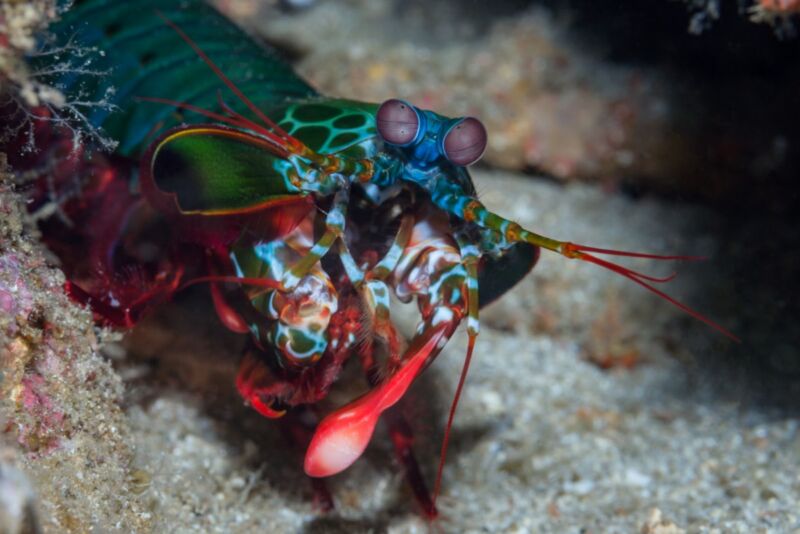When the medium matters: The mighty mantis shrimp pulls its punch in air

Enlarge / A new study shows that mantis shrimp don't punch quite as powerfully when they are out of the water. (credit: Dash Shemtoob/Getty Images)
The mantis shrimp is famous in the animal kingdom for its fast, powerful hammer strike, on par with the force generated by a .22 caliber bullet. One might conclude that those strikes would be even faster and more formidable in air, given the lower density and less drag of the medium. But that's not the case, according to a recent paper in the Journal of Experimental Biology. Rather, scientists found that the animal punches at half the speed in air, suggesting that the mantis shrimp can precisely control its striking behavior, depending on the surrounding medium.
Mantis shrimp come in many different varieties: there are some 450 known species. But they can generally be grouped into two types: those that stab their prey with spear-like appendages ("spearers") and those that smash their prey ("smashers") with large, rounded, and hammer-like claws ("raptorial appendages"). Those strikes are so fast—as much as 23 meters per second, or 51mph—and powerful, they often produce cavitation bubbles in the water, creating a shock wave that can serve as a follow-up strike, stunning and sometimes killing the prey. Sometimes a strike can even produce sonoluminescence, whereby the cavitation bubbles produce a brief flash of light as they collapse.
Per a 2018 study, the secret to that powerful punch seems to arise not from bulky muscles but from the spring-loaded anatomical structure of the shrimp's arms, akin to a bow and arrow. The shrimp's muscles pull on a saddle-shaped structure in the arm, causing it to bend and store potential energy, which is released with the swinging of the club-like claw.
Read 8 remaining paragraphs | Comments
https://ift.tt/38p6e3v
from Ars Technica https://ift.tt/2TCnjlg

No comments